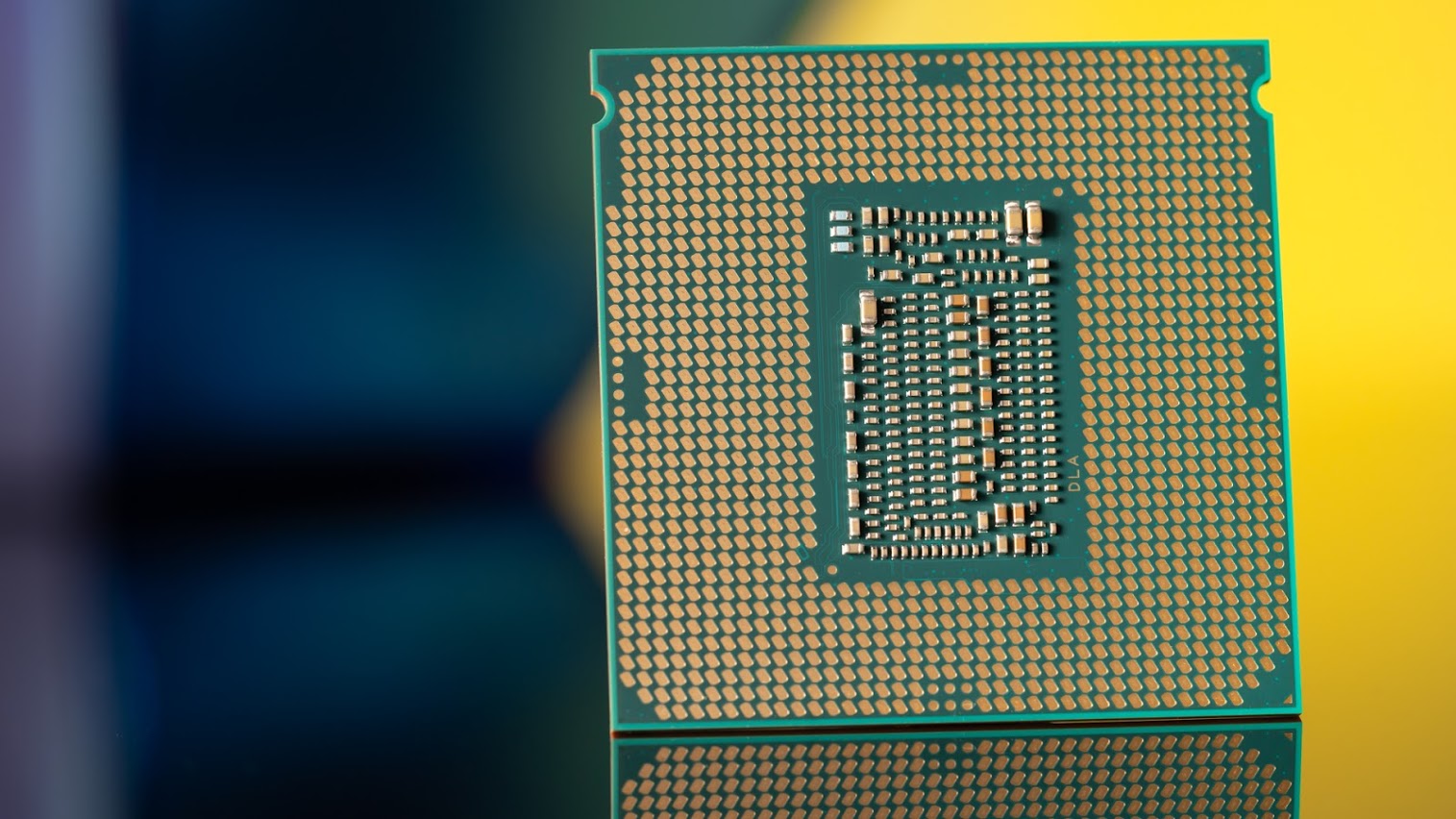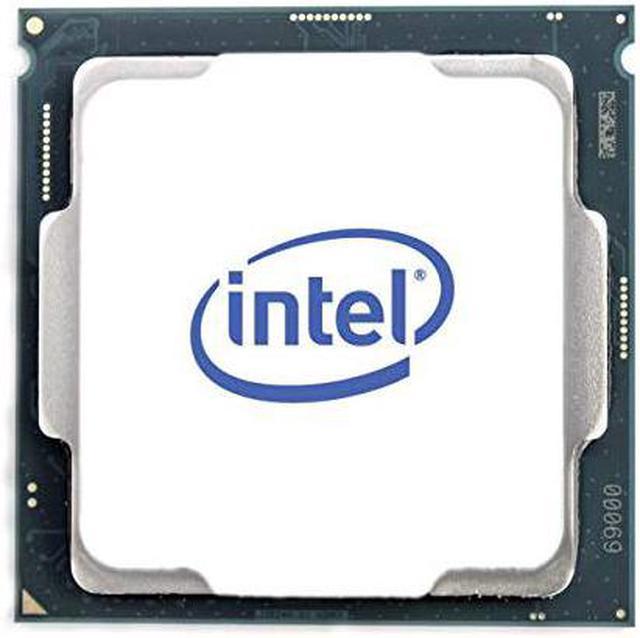The brains behind most electronic devices, central processing units (CPUs) carry out the essential instructions needed to make a computer properly function. Desktop PCs, tablets and even smartphones need a processor to truly be called a computer.
Currently on Newegg, the types of processors you can purchase have been separated into desktop (PC), mobile (laptops, tablets and smartphones) and server categories.
Prices and availability of products discussed were accurate at time of publication, but are subject to change.
What Is a CPU?
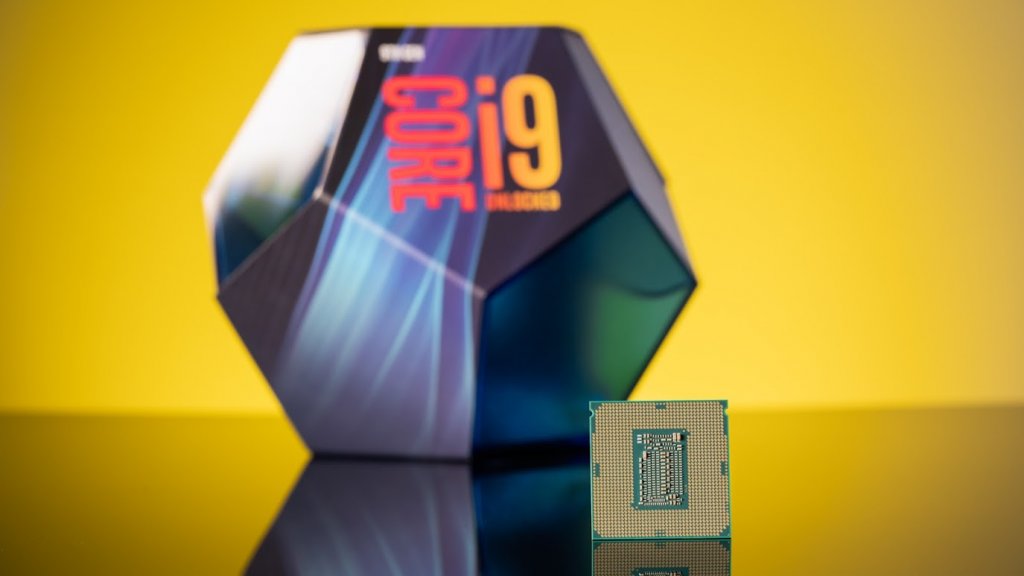
Whatever the environment may be, CPUs share the same universal trait of performing sequenced calculations. From the moment everything’s powered up, computer processors follow a specific instruction cycle until the system is turned off. Whenever you insert a command (for example, logging into your operating system during startup) your computer’s CPU first fetches the instructions that have been requested, which in this case is anything the operating system needs to boot up before bringing you to your login screen. Once the resources for the instruction are fetched, they must then be decoded before being ultimately executed—and the process repeats.
Now that we’ve got a basic understanding of how CPUs function, we can start peeling away the complex layers that have formed around this crucial, ever-evolving component.
Desktop-Processor Tiers
Just like the desktop PCs they power, desktop CPUs can be tiered into separate performance classes depending on how well they perform in both low and high-end tasks. From least to most-demanding, here are the four categories of desktop processors.
Basic Use & Business
 For the most part, you don’t need an expensive or mega-stacked desktop processor to stream movies or YouTube videos one at a time. Business applications like the programs found within the Microsoft Office Suite do not require faster-than-average clock speeds or a high amount of cores. Basically, if you’re looking to have a dedicated entertainment rig or a fleet of business desktop PCs that run light-load processes, you won’t need to cough out a lot of money for a higher-end CPU.
For the most part, you don’t need an expensive or mega-stacked desktop processor to stream movies or YouTube videos one at a time. Business applications like the programs found within the Microsoft Office Suite do not require faster-than-average clock speeds or a high amount of cores. Basically, if you’re looking to have a dedicated entertainment rig or a fleet of business desktop PCs that run light-load processes, you won’t need to cough out a lot of money for a higher-end CPU.
Gaming
 If you’re looking to have a machine that’s strictly for gaming, you’ll need a processor that meets at least the minimum-requirement specifications of the main game(s) you’re trying to play. Of course your safest bet is to go with the latest and greatest, but most wallets can’t handle that kind of early-adopter investment. The major manufacturers Intel and AMD release revisions (referred to as generations) for their current line processors on a consistent basis or until they release the next series.
If you’re looking to have a machine that’s strictly for gaming, you’ll need a processor that meets at least the minimum-requirement specifications of the main game(s) you’re trying to play. Of course your safest bet is to go with the latest and greatest, but most wallets can’t handle that kind of early-adopter investment. The major manufacturers Intel and AMD release revisions (referred to as generations) for their current line processors on a consistent basis or until they release the next series.
Unfortunately, outside of rumors, there’s no clear way to determine when the next processor model’s price and availability hit the market. That’s why it’s best to look into your main game’s minimum and recommended specs. The battle royale game Apex Legends has a minimum CPU requirement of an Intel i3-6300 or AMD FX-4350—processors released between 2013 and 2015. At the same time, the highly popular MOBA (multiplayer online battle arena) League of Legends just needs at least a 2GHz (clock speed) processor that supports SSE2, a processor instruction-set first made available in the year 2000.
Content Creation and Live Streaming
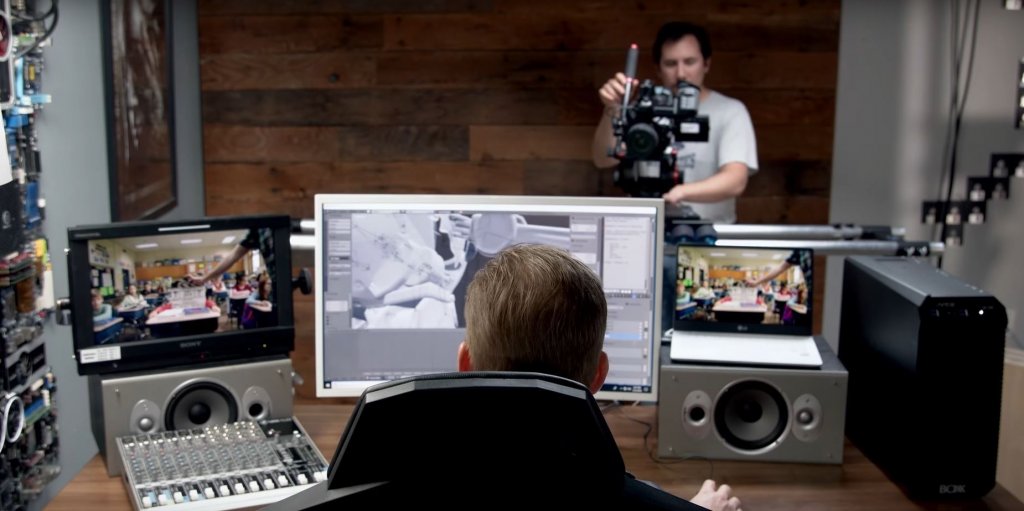 While gaming-build processors focus on great single-core performance to run gaming applications one at a time, content creators (or those interested in live streaming) should be looking for CPUs that can properly multitask. While performing photo and video editing, any given workflow can feature multiple applications alongside the main media-editing software—which means you’ll need more cores carrying workloads from your desktop processor.
While gaming-build processors focus on great single-core performance to run gaming applications one at a time, content creators (or those interested in live streaming) should be looking for CPUs that can properly multitask. While performing photo and video editing, any given workflow can feature multiple applications alongside the main media-editing software—which means you’ll need more cores carrying workloads from your desktop processor.
Effective multitasking is especially relevant to live streamers. Whether they’re using a single- or dual-desktop-PC setup, having a CPU that rates well in executing multiple computations is essential in providing a smooth, distraction-free experience for viewers.
Workstation
If you’re looking to get started in the world of 3D modeling, it’s time for you to get acquainted with CPUs that meet workstation-processing ideals. It’s easy to say “just get more cores and the highest clock speed available”, but let’s expand a bit more on the processes.
Similar to gaming, the act of working on computer-generated 3D models within a given software application relies on strong single-core performance. When it comes time to share your work by way of rendering that’s when having more cores comes into play, as the program will use every core at 100% of their power to efficiently complete the process.
Features to Consider
What makes a processor tick? More specifically, what do you need to know about the most important component in your next desktop/laptop purchase or build? Whether you’re going DIY or pre-built, understanding all the internal workings of a computer’s CPU is ultimately beneficial in properly optimizing what you want to get done on your next system.
Series, Generations & Socket Types
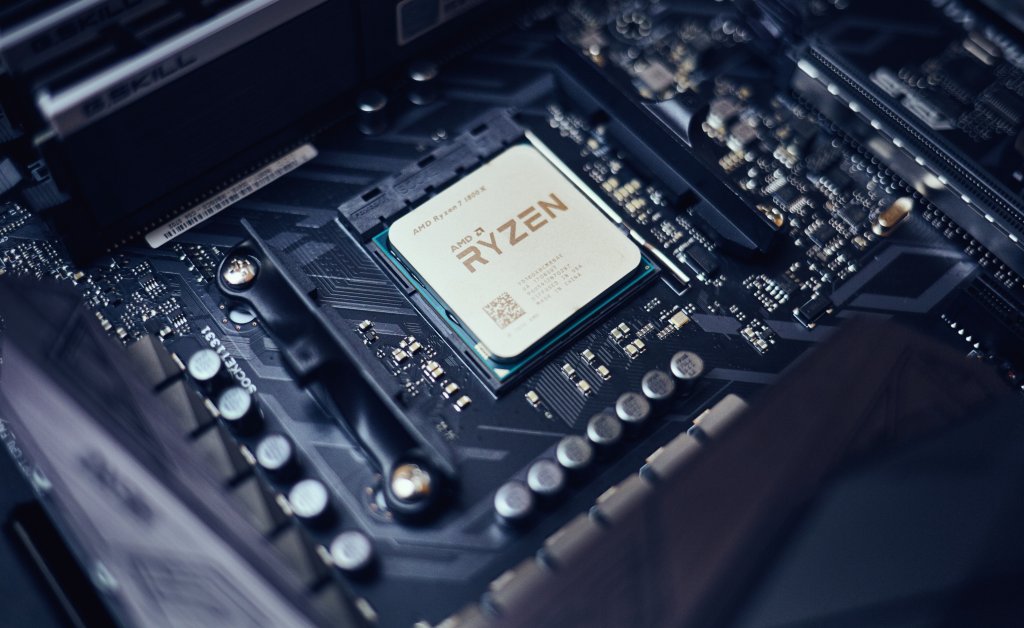
As mentioned in the previous Gaming section, the two sole manufactures of desktop-computer processors are Intel and AMD. Ever since their first 4-bit processors released in the 1970s (Intel 4004 and AMD Am2501), both companies release and categorize their products by a series brand name: i.e. Intel “Core” and AMD “Ryzen”. From there, Intel and AMD manufacture successive (sometimes yearly) revisions, better known as generations. Of course, these changes introduce product updates such as improved micro-architecture—which in turn can potentially change a CPU’s socket type.
CPU sockets are the areas on the motherboard where your processor lives. If you’re going DIY, you need to know: One size DOES NOT fit all. In order for your processor to make the proper mechanical and electronic connections, you must ensure the processor you’re buying fits your motherboard’s socket type. Of course AMD and Intel have their own socket types, but that’s not where the differences end. For example, Intel’s 1151 socket type fits processors from their 6th to 8th generation of processors. If you try to add any other processor, it just won’t fit, let alone work.
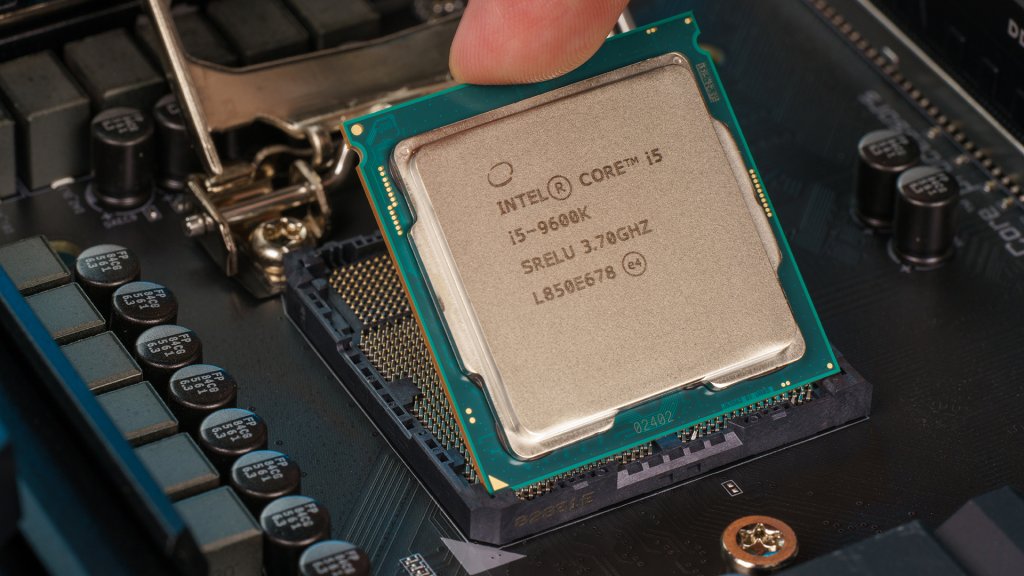 As of writing, the most recent AMD processor series and generation is the 3rd generation of Ryzen, while Intel has released the 9th generation of their flagship Core desktop-CPU series of processors. Each series has different levels that are distinguished by power (in terms of computing) and relative price (more power = higher cost).
As of writing, the most recent AMD processor series and generation is the 3rd generation of Ryzen, while Intel has released the 9th generation of their flagship Core desktop-CPU series of processors. Each series has different levels that are distinguished by power (in terms of computing) and relative price (more power = higher cost).
From top to bottom, here are the current levels of AMD and Intel processors:
3rd Generation AMD Ryzen: Ryzen 9, Ryzen 7, Ryzen 5 and Ryzen 3
9th Generation Intel Core: Intel Core i9, Intel Core i7 and Intel Core i5
Now, what’s the difference between the separate levels of these products? And what’s the point of differentiating this computer hardware that essentially serves the same end? The simple answer is cores and the clock speed of those cores. Simply put, something like the Ryzen 3, that comes with four cores, is best for entry-level users running simple operations, while the Ryzen Threadripper with its twelve cores and higher clock speeds can be properly utilized by advanced users who need all the power they can get to complete their professional-level, high-compute tasks efficiently.
Integrated Graphics
If you pick the right processor, you can drastically cut your budget by not having to buy a graphics card. CPUs with integrated graphics let you display video so long as your motherboard has a good, compatible video port (usually HDMI or DisplayPort) on its chipset. Of course, the quality you’re getting from the integrated GPU (graphics processing unit) on these desktop processors will never be on the same level as a decent dedicated graphics card.
If you’re looking to play modern games like Total War: Three Kingdoms or even Fortnite without a graphics card, you’ll have to run lower resolutions up to 720p and select low graphical settings in order to maybe approach an average of 30fps performance. These numbers aren’t the best, especially in relation to any new computer monitor you may end up using.
Ultimately if you just want to watch videos or just need to see the Microsoft Office applications you’re running, going with a CPU that has integrated graphics can save you a decent amount towards your next PC build or pre-built desktop purchase.
Cores
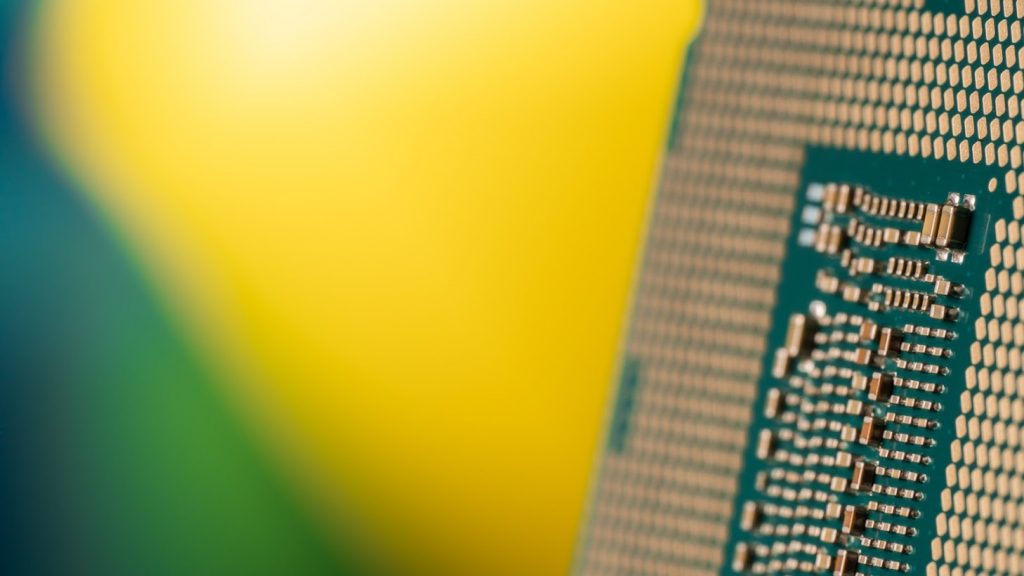 A CPU’s core is responsible for carrying out the instructions that the user initiates. From completing actions such as starting up programs to completing calculations, the core is what gives these components the name “processing unit.” At their inception, desktop processors came with one core and were restricted in how well they could compute—more specifically, they could only efficiently run one process at a time.
A CPU’s core is responsible for carrying out the instructions that the user initiates. From completing actions such as starting up programs to completing calculations, the core is what gives these components the name “processing unit.” At their inception, desktop processors came with one core and were restricted in how well they could compute—more specifically, they could only efficiently run one process at a time.
As mentioned in the previous section, we’re currently in a market of CPUs that come with multiple cores. Multi-core processing is essential for users who need to multitask. As of writing, you should at least be looking to purchase and utilize a processor with four cores or six cores. The reason for this is to ensure your machine can keep up with the constant coding updates that software engineers implement to your favorite programs and operating systems. If you’re not worried about using the latest update, you can of course get by with an older CPU.
Threads
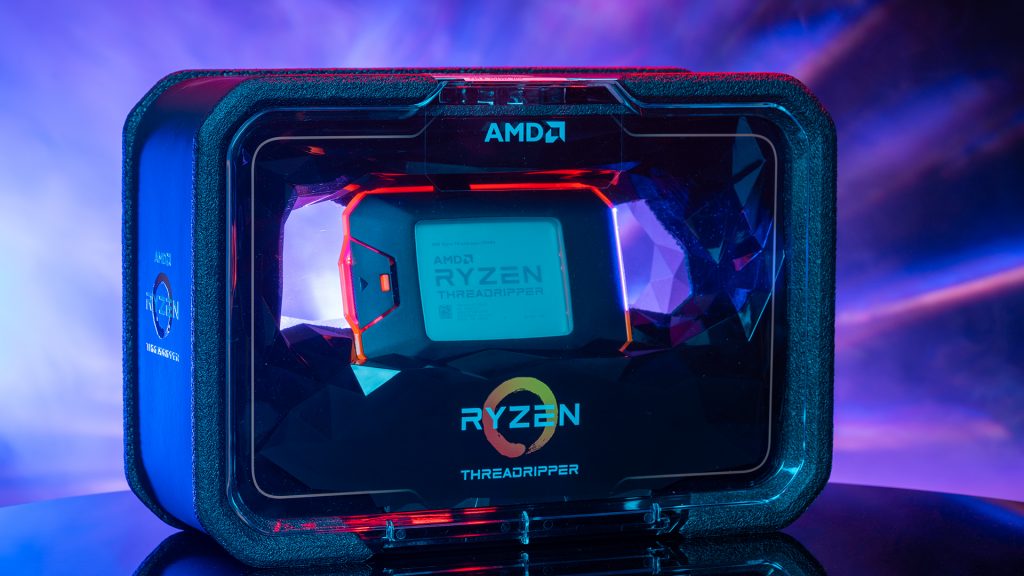
Nowadays, some of the latest CPUs have cores that go beyond the amount of physical cores. For this discussion, let’s use AMD’s 2nd generation Ryzen Threadripper, a powerhouse multi-core processor, as a point of reference. Looking at the specifications, this product comes with 16 cores and 32 threads. Threads are the result of the modern-day CPU’s multithreading function—a process that essentially splits an execution command and anything needed to complete it into multiple subsets (hence 32 threads for 16 cores on the Ryzen Threadripper). Though threads share the same resources as the cores that they are supporting, the process becomes more efficient due to more hands being on deck.
Whereas Intel has branded their multithreading feature as Hyper-Threading Technology, the process for both AMD and Intel processors falls under the SMT (simultaneous multithreading) system.
Operating Frequency, Clock Cycles and Speed Factors
Sometimes referred to as clock rate or clock speed, a computer processor’s operating frequency refers to how many cycles per second can be executed in a clock cycle. So… What does that mean? Whenever you “command” your computer to do something, such as start a program or fetch a file, the CPU will process data by pulsing to move individual bits. This physical pulsing is measured in hertz (1 cycle) and today’s market of processors produce gigahertz speeds (1 billion cycles per second).
So the higher the clock speed, the better the processor? Not entirely. As you’re going through different generations of desktop CPUs, you may notice that current generations may have a lower operating frequency than an older one—what gives?
There are two reasons for this:
- AMD and Intel are always improving their processing architecture, specifically the instructions per cycle (IPC) needed to complete a process.
- CPU efficiency is determined by other factors, including: motherboard bus speed, the processor’s cache size, RAM specifications and storage-device quality.
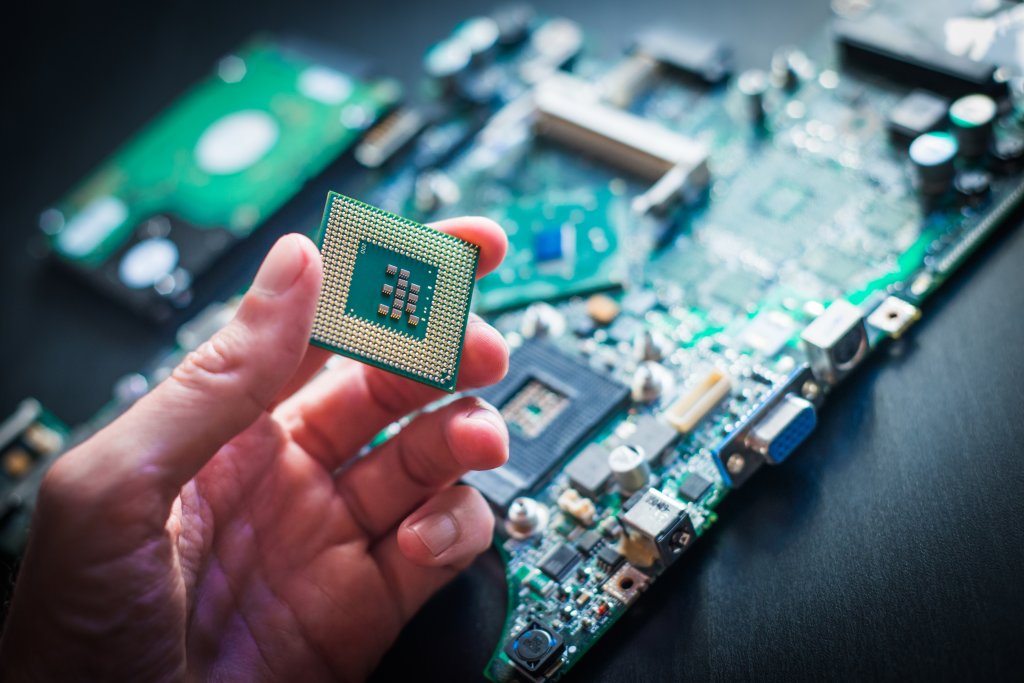
Let’s compare an Intel Core i9-9900K (9th generation) with an Intel Core i7-6700 (6th generation). Besides their difference in amount of cores, the base clock speeds of these processors are essentially neck and neck (3.6GHz and 3.4GHz respectively). Though these speeds are generally the same, Intel (and AMD with their different generational options) aren’t just sitting around when it comes to improving their CPU architecture. The main goal isn’t to have the most cycles per second—it’s to have fewer cycles needed to complete any given task. Testing and documenting IPC is usually regulated to benchmark tests but roughly speaking, an older processor may take six cycles to complete a task, while a newer one takes four cycles— so in these cases, less is more.
While shopping for your next desktop-PC processor, you must always keep the following in mind: Though a CPU does a lot of the heavy-lifting, it cannot single-handedly determine your computer’s efficiency. Your motherboard’s bus speed refers to how much data its circuits can handle at one time. This quantification ultimately allows information and commands to travel faster. These commands and processes need somewhere to be stored as well as quickly accessed in the proper order. This means a sizable on-board CPU cache along with fast + sizable desktop RAM is needed to get the most out of the processor’s features.
On top of all that, where your operating system and programs are stored will also determine how quickly they can be started up and accessed—with SSDs being faster than HDDs.
Boosting vs. Overclocking
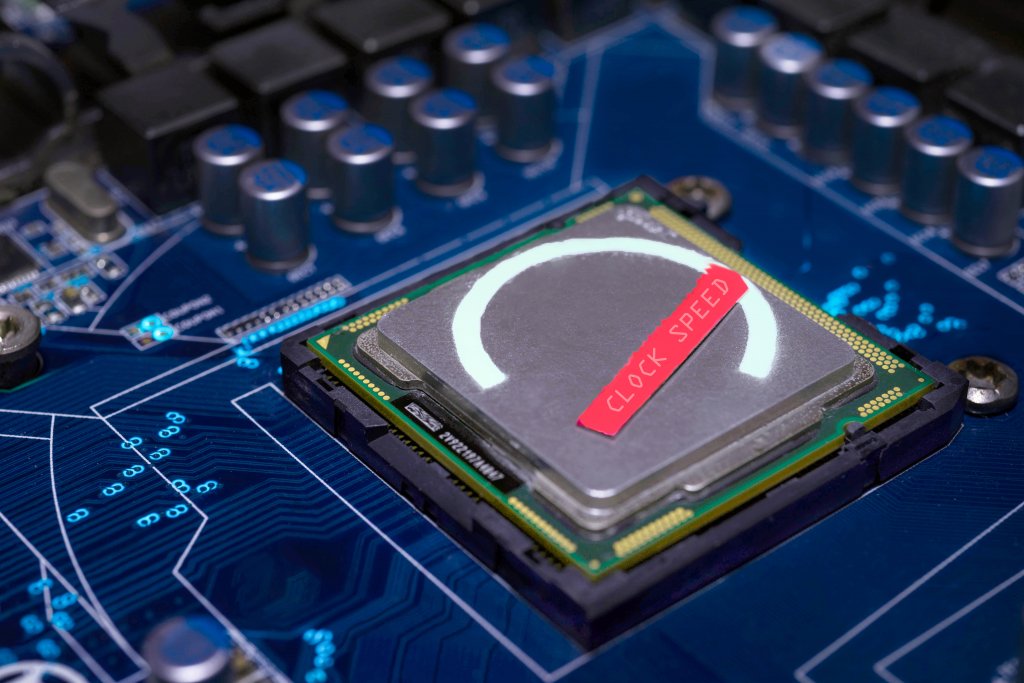
In the majority of cases, today’s desktop-CPU base operating speeds can and most likely will change. There are two ways this is done, via an internal + autonomous operating-frequency boost (sometimes called dynamic overclocking), or by way of overclocking.
Intel calls their version of clock-speed boosting Turbo Boost while AMD has branded their tech Turbo Core (clear lines in the sand, people). Both internally integrated technologies do the exact same thing. Similar to how you push the gas pedal on your car to go faster, CPUs with built-in dynamic overclocking scale up their clock speed when needed.
For example, your computer may run at 2.8GHz if you’re playing a video in a browser and have some light-load programs open (Microsoft Office applications, for example). Now, if you decide it’s time to game at ultra settings, your processor may go up to 4.1GHz—or whatever the maximum Turbo Core (AMD) or Turbo Boost (Intel) speed is for your respective CPU. This is all done in order to efficiently run all necessary commands. If you take a look at their specs, the new Intel Core i7-9700K has a base speed of 3.6GHz and a Turbo Boost push of 4.9GHz, while the AMD Ryzen 7 2700X has a base speed of 3.7GHz and Max Boost speed of 4.3GHz.
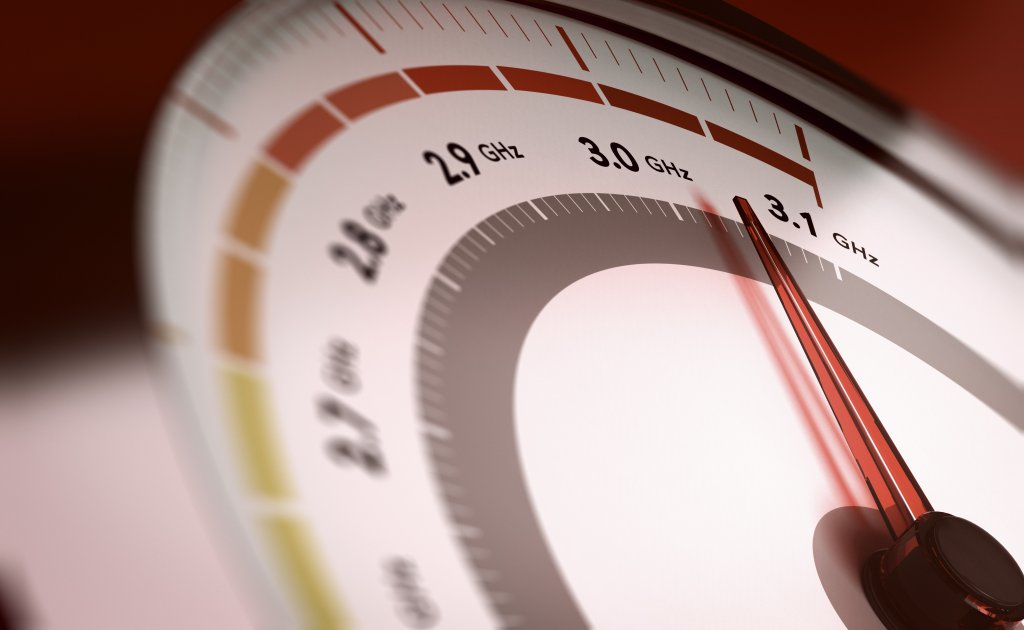
Before we get into the more DIY-centric world of overclocking, we need to establish an understanding of a desktop processor’s Thermal Design Power (TDP). TDP, sometimes called thermal-design point, refers to the maximum amount of heat generated by the CPU while working at its top manufactured operating frequency (Turbo or Max Boost included). Similar to light bulbs, a desktop CPU’s generated heat is measured in watts. Taking a look at the specs, processors like the AMD Ryzen 5 2400G have a TDP of 65W. So how does this relate to overclocking?
On paper, if and when you decide to overclock your processor, you’ll basically be applying more voltage to your product with the intent of increasing its operating-frequency performance. Doing this raises the TDP past what the manufacturer (Intel or AMD) have set in place—thus instantly voiding your product warranty as the risk of the CPU malfunctioning is now increased. Because of this, overclocking is an intermediate to advanced-user process. In this buying guide, we’ll only provide the introductory basics while stressing that you must take the time to further research everything in relation to the CPU you end up purchasing and even consider using software to properly monitor your system.

If you go Intel, you must first ensure that your processor is “unlocked”, Intel’s way of informing you that the processor’s clock multiplier can be increased in the right hands—and though it’s not enough to keep your warranty, is safer to overclock. If you indeed have an unlocked Intel Core processor, you can download the Intel Extreme Tuning Utility (Intel XTU) to start tweaking. Attempting to overclock a locked CPU excludes you from the XTU software and leaves you to hunt for adjustment options in your PC’s BIOS—if it even has them.
As of writing, AMD processors made since the AM3+ socket update can be overclocked. If you have a processor from AM3, FM2+ or sockets below, you’ll have to check to see if AMD’s proprietary overclocking software, AMD OverDrive, will work with your device. Like XTU, OverDrive has a stress-test function to see the limits of your processor. This feature alone can give you a great starting point for what to tweak and how far you can and should push.
All in all, it’s best (but not the only way) to go with the manufacturer’s overclocking software after ensuring your desktop CPU has the capability to extend its performance limits. It must be noted that some processors are better for overclocking than others. The best way to check is to look at a processor’s TDP, for example, the aforementioned Ryzen 5 2400G with a 65W TDP is quite limited compared to the 2nd Gen Ryzen Threadripper 2990W that works at an ample TDP of 250W.
CPU-Cooling Solutions
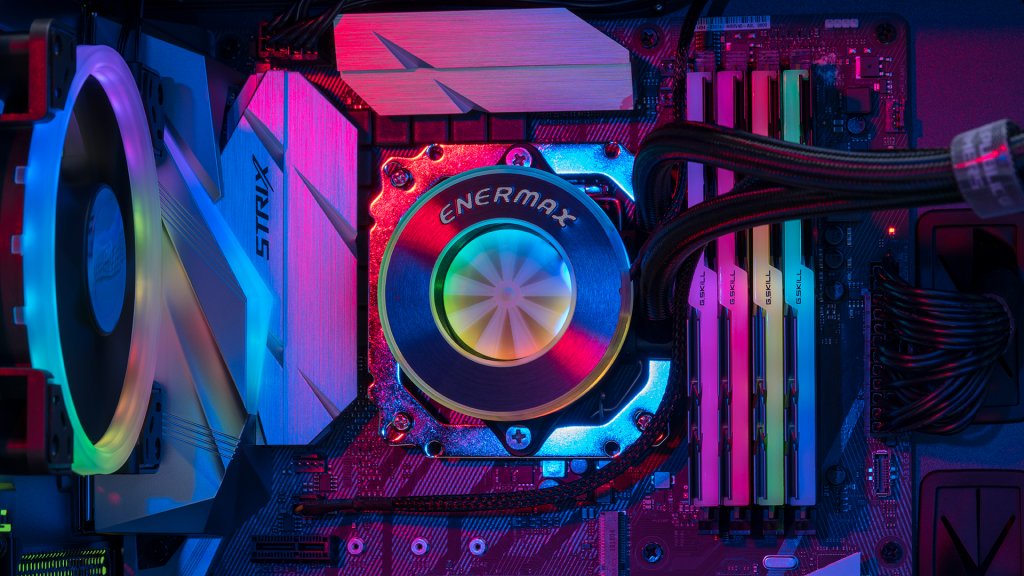 Even without overclocking, CPUs get hot—really hot. Because of this, desktop processors need cooling devices to keep them from shutting down or, in worst-case scenarios, becoming permanently damaged. When you’re shopping for your next CPU, make sure to check if a cooling device is included. For example, certain products like the Intel Core i7-8700K do not package a CPU cooler—so you’ll have to implement one of the following cooling solutions.
Even without overclocking, CPUs get hot—really hot. Because of this, desktop processors need cooling devices to keep them from shutting down or, in worst-case scenarios, becoming permanently damaged. When you’re shopping for your next CPU, make sure to check if a cooling device is included. For example, certain products like the Intel Core i7-8700K do not package a CPU cooler—so you’ll have to implement one of the following cooling solutions.
CPU Fans & Heatsinks
A prerequisite for most processors, CPU fans with heatsinks are the standard solution for keeping your desktop CPU cool. After placing your new processor into its compatible socket, your next step is to install the hefty block (heatsink) with a fan on it—also known as a CPU cooler. Most high-end CPU coolers come with the following:
- Contact base – The surface that touches the top heat shield on your processor.
- Heatsink – The metal block with lots of fins.
- Heat pipes – Hollow tubes connected to the heatsink.
- Up to a 140mm bladed fan
How a CPU cooler works
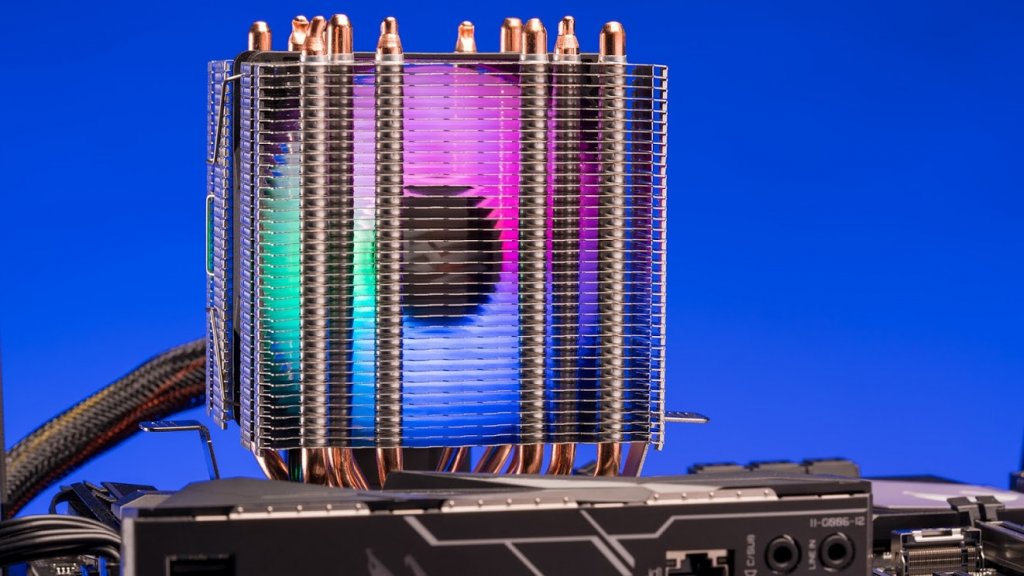 All together, the aforementioned components move heat in a flow cycle. To start, your CPU’s generated heat hits the contact plate that’s connected to the hollow, porous-walled heat pipes. Inside these heat pipes is a liquid that turns to gas when heated. The gas moves up to the heatsink then evaporates back down, starting its simultaneous process over. The initial heated gas goes through the heatsink, and its many fins that effectively help dissipate the heat. Meanwhile, at the top of the chain, the main 120mm or 140mm fan blows air through the heatsink. This lets out the traveled heat and keeps the processor operating at a safe temperature.
All together, the aforementioned components move heat in a flow cycle. To start, your CPU’s generated heat hits the contact plate that’s connected to the hollow, porous-walled heat pipes. Inside these heat pipes is a liquid that turns to gas when heated. The gas moves up to the heatsink then evaporates back down, starting its simultaneous process over. The initial heated gas goes through the heatsink, and its many fins that effectively help dissipate the heat. Meanwhile, at the top of the chain, the main 120mm or 140mm fan blows air through the heatsink. This lets out the traveled heat and keeps the processor operating at a safe temperature.
As mentioned earlier, it’s best to double check whether or not the desktop CPU you’re looking to purchase comes packaged with a stock CPU cooler and heatsink. If there’s not one or you just want to upgrade and replace the stock cooler you get, check out Newegg’s subcategory page for CPU fans and heatsinks. Make sure to filter by your processor’s specific socket for either AMD or Intel motherboards.
Thermal Compound & Pads
Sometimes an added bonus that comes with your stock CPU cooler, thermal compound (also called paste or grease) is a cooling solution that is applied between the CPU cooler’s contact plate and the top of the processor. Thermal compounds are essential in guaranteeing your cooler’s contact plate and heatsink have all their bases covered in relation to perfectly gathering and transferring heat. If your stock CPU cooler has thermal paste or grease already applied, make sure not to touch or spread the compound. It is more than likely that the manufacturer has applied the right amount of paste for your needs.
Going with stock options is rarely OK for DIY enthusiasts and the needs of high-performance system builds. Thermal compounds come in three forms: metal-based, ceramic-based and silicon-based. Silicon-based compounds are what you find on stock coolers (the cooling device that comes packaged with certain CPUs) and are not as effective as ceramic- and metal-based compounds. Up next in efficiency are ceramic-based thermal pastes because they don’t need a curing time as compared to their silicon counterparts. Metal-based compounds do the best job, but at an added risk. Because metal-based compounds have metal particles, these solutions are electrically conductive and may cause a short on your motherboard if applied incorrectly.
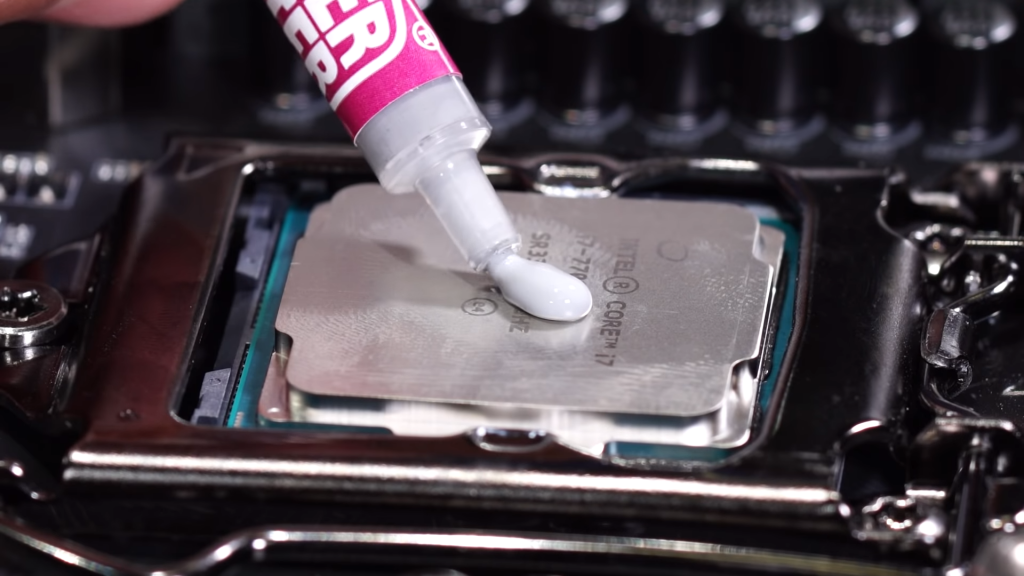 Staying on the topic of risks, applying too much thermal paste is not a good thing for a couple of reasons:
Staying on the topic of risks, applying too much thermal paste is not a good thing for a couple of reasons:
- Thermal compounds are not as good at conducting heat as the copper-based components on your CPU cooler. Applying too much paste will restrict the copper’s effectiveness, making your system have a higher-than-optimal operating temperature.
- Applying too much grease or paste can cause the compound to spill over the sides of your processor, potentially causing fatal damage to your entire system.
Serving the exact same function, thermal pads are a mess-free alternative to thermal-compound solutions. Similar to metal-based pastes and grease, the majority of thermal pads are electrically conductive so you’ll have to be careful not to place it anywhere else on your motherboard besides the top of your CPU. This includes ensuring that the size of the pad you get is not larger than your desktop processor—if it is, you can safely use scissors to make the pad smaller.
Water/Liquid Cooling
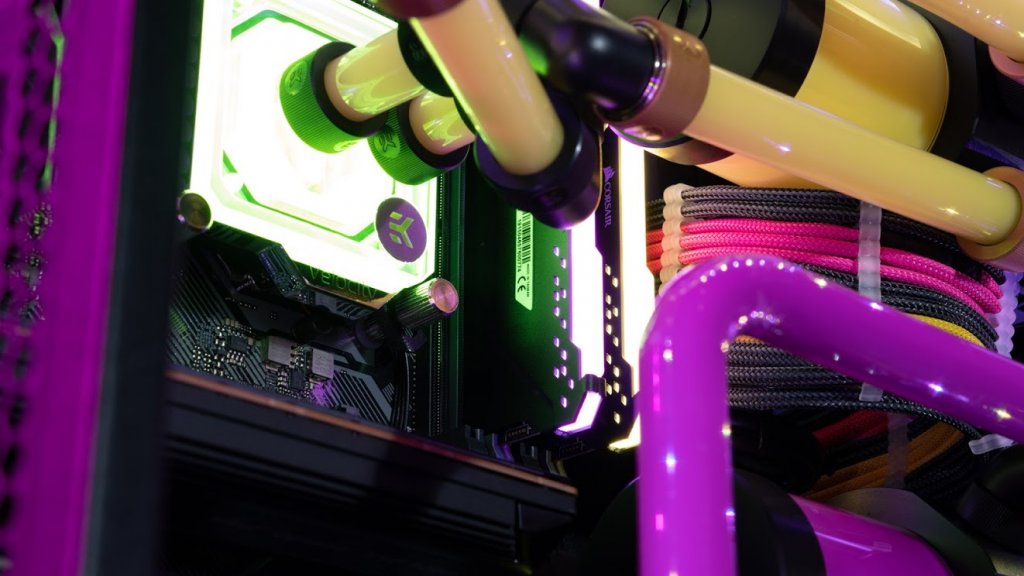 A favorite among DIY enthusiasts, water- and liquid-cooling solutions make your system run and look quite cool. As Insider has previously covered, going with liquid cooling can be a bit daunting at first because you’re dealing with water, the age-old enemy of electronic circuitry. Fortunately, Newegg has plenty of pre-assembled, all-in-one water-cooling kits that are easy to mount and do not require you to add any coolant.
A favorite among DIY enthusiasts, water- and liquid-cooling solutions make your system run and look quite cool. As Insider has previously covered, going with liquid cooling can be a bit daunting at first because you’re dealing with water, the age-old enemy of electronic circuitry. Fortunately, Newegg has plenty of pre-assembled, all-in-one water-cooling kits that are easy to mount and do not require you to add any coolant.
Now, if you’re willing to put in the proper time and effort to research and execute DIY cooling, you can find the right variety of liquid-cooling pieces at Newegg. DIY cooling gives you more flexibility in terms of customizing the look of your setup as well as the exact components you want cooled.
The King of Components
Your system is an ecosystem of components that rely on each other to thrive—and at the head of it all is your CPU. Hopefully this guide has given you everything you need to get started on a proper hunt for the right CPU to fit both your needs and budget.
Newegg’s home for processors houses more relevant guides and product reviews to further support you before deciding on a final purchase. Computer components, especially CPUs, constantly get updated, so make sure to check back here for any new information that will help your shopping experience.

